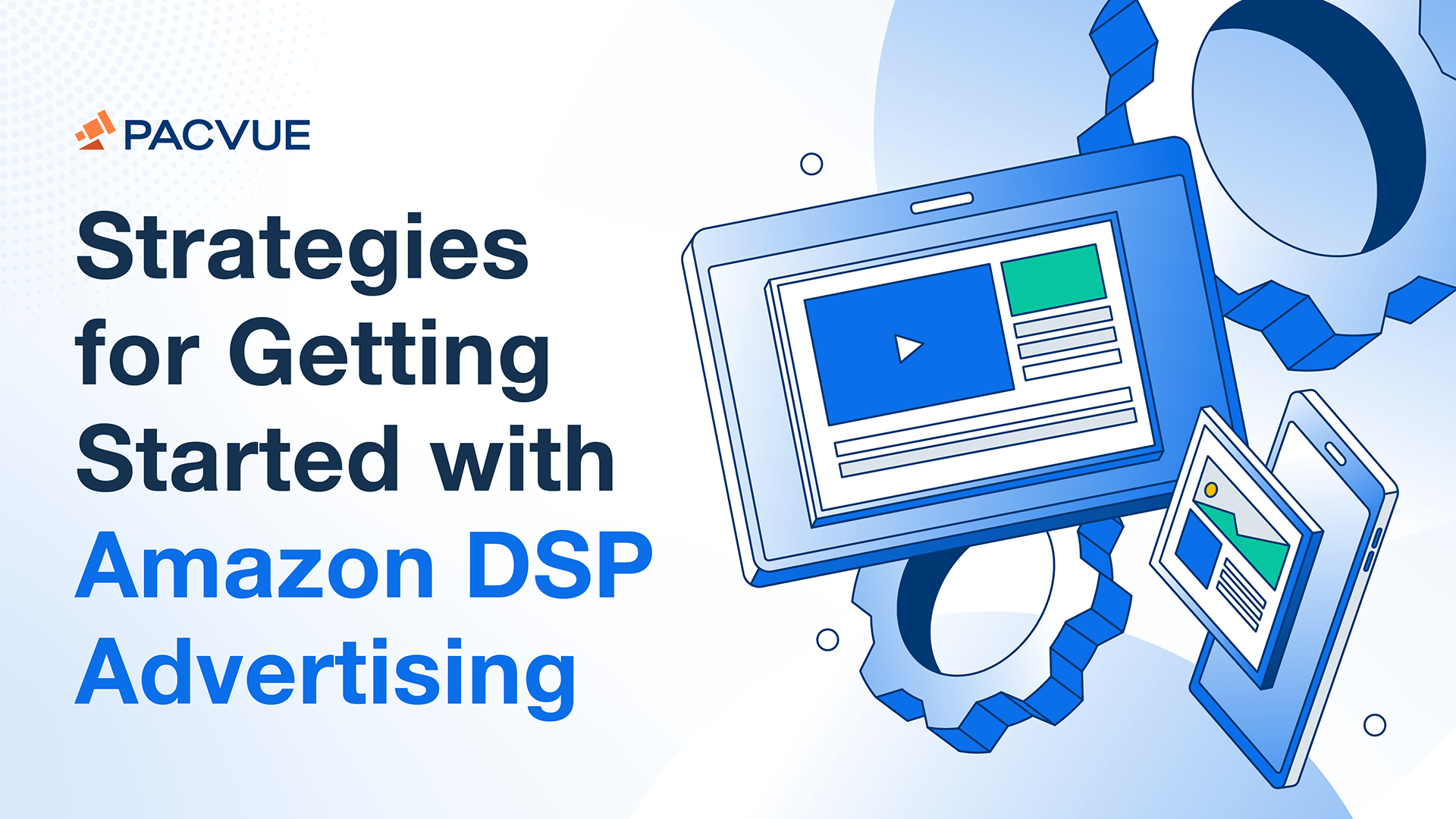Amazon Demand-side platform (DSP) advertising is a fundamentally different way to target potential new-to-brand customers. While search advertising (PPC) is a bottom-of-funnel marketing strategy, where brands compete for ad placements on the most desirable queries and optimize based on goals, Amazon DSP Advertising is a full-funnel marketing strategy that allows brands to enhance shopper engagement and drive traffic directly to brand or product detail pages.
Amazon DSP allows brands to programmatically buy ad placements in a wide range of formats (including video and audio) to reach new and existing audiences on and off Amazon. DSP targets shoppers based on behavior, demographics, and interests and allows brands to retarget based on previous interactions, driving buyers down the funnel and eventually to the purchase phase. DSP ads also provide brands and agencies with complete creative freedom on the ads they run and provide the most advanced reporting and audience insights available on Amazon.
Unlike Sponsored Display ads, Amazon DSP advertisers can fully customize headlines, branding, images, and copy. When leveraged alongside Amazon Marketing Cloud (AMC), brands can better understand the consumer shopping journey and be more equipped to break into new markets to meet DSP campaign goals. AMC helps brands build the optimal customer journey, shows when the path to purchase is breaking down, and how to tweak strategies to prevent cart or product detail page (PDP) abandonment. It optimizes campaign performance and efficiency, giving brands better results without increasing the budget.
In this post, we’ll break down the fundamentals of getting started on Amazon DSP advertising to build out programmatic display, video, responsive, and other types of campaigns.
Creating an Amazon DSP Account
To get started with Amazon DSP, brands need to create a DSP ‘entity’, enabling them to run display advertising through Amazon’s demand-side platform. As an official Amazon DSP Reseller, Pacvue can help brands get started with DSP account management and transfer process. Pacvue provides support to get started and scale advertising efforts while enhancing performance through automated rules.
Launching ads in Amazon DSP is a manual process, so brands should be prepared for the time commitment to fully complete the setup. Brands can leverage tools like Pacvue DSP’s Super Wizard to build robust strategies and launch DSP campaigns more effectively.
Creative Assets for DSP Ads
Amazon DSP Ads can be fully customized, allowing brands to create unique headlines, incorporate brand logos, and use custom images to ensure their products stand out from the competition. The three most common ad types are responsive, static image, and video ads (STV / OLV).
- Responsive: Responsive ads are prebuilt Amazon templates that populate an ad using a product image and title from the ASIN page. These automatically adapt to different sizes to serve on multiple sites and locations.
- Static Image: These are custom image ads brands can create to drive consumers to a brand store or an external non-Amazon site. Brands utilizing custom images tend to see higher brand awareness and improved click-through-rates (CTR).
- Video: Similar to static image ads, brands can create custom video ads to drive consumers to custom links, like a brand store or external non-Amazon site.
Where do Amazon DSP Ads Appear?
Amazon DSP ads show up on both Amazon-owned and operated sites, as well as on a large list of Amazon third-party partner sites. This means brands can serve ads as customers are browsing on Amazon or while someone is looking up a dinner recipe. Brands can customize the inventory on which their ads appear, ensuring complete control over ad placement. For an added layer of granularity, brands can also adjust whether ads are shown on desktop or mobile devices.
Amazon DSP ads could appear across Amazon’s wide network of media sites. Other than Amazon.com, ads may be displayed on other Amazon-owned sites:
- Streaming TV
- Freevee
- Audible
- Twitch
- Kindle
- Goodreads
- Zappos
- Woot
- And more
DSP provides marketers with access to Amazon over-the-top advertising (OTT), available across Amazon’s devices. Advertisers can launch video ads on Fire TV devices connected to TV and movie streaming services.
DSP gives brands the ability to make optimizations, such as:
- What your ad looks like
- What your ad says
- Who sees your ad
- When do they see your ad
- Where did they see your ad
- How often do they see your ad
Evaluating Amazon DSP Results
While data is collected in real-time, brands can’t expect to see immediate performance boosts. DSP ads are often the first step in a customer’s journey, meaning brands need a longer lookback window to assess the impact of the ads on Amazon. To truly measure the success of DSP ad campaigns, brands need to clearly define and understand their campaign goals and objectives.
Improving Marketing Strategies with DSP
As competition grows on Amazon, brands need to keep evolving their ad strategies to keep pace. DSP is a powerful marketing strategy to capture users’ attention and reach customers early in their purchase journey, making it more likely that they will choose your product at the end of that journey. Beyond being a tool for upper funnel growth, DSP ads can build brand awareness, encourage brand engagement, increase sales numbers across all of Amazon, and inspire more brand loyalty with existing customers.
Learn More
If you’re looking to get started on Amazon DSP advertising, contact our team of experts. We’d be happy to help.













